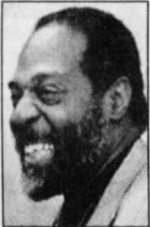 St. Louis Post-Dispatch, April 30, 2000. After two trials ended in hung juries, Darby Tillis (formerly known as Darby Williams) and his codefendant, Perry Cobb, were convicted by a jury and sentenced to death in 1979 for the murder and armed robbery of the owner and an employee of a restaurant on the north side of Chicago. The convictions rested on the testimony of a woman, Phyllis Santini, who portrayed herself as an unwitting accomplice in the crime, and a purported eyewitness, Arthur Shields, who had been unable to identify Cobb and Tillis at their first two trials, but somehow was positive at the third trial. The victims, Melvin Kanter and Charles Guccion, were shot to death shortly before 6:00 a.m. on November 13, 1977, at Mel’s Red Hots on North Clarendon Avenue in Chicago. Shields, who was working at a bar across the street when the crime occurred, did not see the actual incident, but claimed to have seen the defendants standing in the doorway of the restaurant at about the time the crime reportedly took place. Cobb and Tillis, ages 35 and 34 respectively, were arrested three weeks later, after Santini contacted police and accused them of committing the crime. Both men adamantly professed their innocence, but police found a watch taken from one of the victims in Cobb’s room. Cobb claimed he had bought the watch for $15 from Santini’s boyfriend, Johnny Brown, a drug dealer and pimp who Cobb and Tillis contended was the actual killer of Kanter and Guccion. It took three jury trials in the Circuit Court of Cook County for prosecutors to convict Cobb and Tillis. The first two trials ended in hung juries. The third trial, before Judge Thomas J. Maloney and an all-white jury, resulted in their conviction, and on October 17, 1979, Cobb and Tillis were sentenced to 30 to 60 years imprisonment on the armed robbery conviction and for the murder convictions, they were both given the death sentence. On October 4, 1983, the Illinois Supreme Court, in a unanimous opinion, reversed the 1979 conviction because several evidentiary and other rulings of the trial judge “deprived the defendants of a fair trial.” At that point, Chicago Lawyer published a detailed account of the case. Michael Falconer, a recent law school graduate who years earlier had worked with Santini at a factory, happened to read the article. He immediately contacted Cobb’s and Tillis’s defense lawyers to report that Santini had once told him that she and her boyfriend had robbed a restaurant and shot someone. She was worried that the police were closing in on them. The boyfriend, Falconer recalled, was Johnny Brown, the man from whom Cobb claimed to have purchased the watch. Unwilling to drop the charges, the State continued its pursuit of a conviction. When the case came up for retrial in August 1986, Falconer was working as an assistant state’s attorney in neighboring Lake County. Cook County State’s Attorney Richard M. Daley contacted Lake County State’s Attorney Fred Foreman and asked him to intercede to prevent Falconer from testifying. Foreman refused. Falconer testified at the fourth trial which, again, resulted in a hung jury. Finally, at the fifth trial, Cobb and Tillis waived their right to a jury and, based on Falconer’s critical testimony, were acquitted by Judge Thomas Hett. Hett told the press that “I can’t help but believe him.” He said that Falconer was “exhibiting the true job of a prosecutor—to do justice as he sees it.” Cobb and Tillis had spent nearly a decade in prison, almost four of which were on death row. They were acquitted on January 21, 1987. Fourteen years later, in 2001, Governor George Ryan pardoned them based on actual innocence. After receiving this pardon, Tillis received compensation of $120,000 for his wrongful conviction. Tillis spent the years until his death in 2014 as an advocate speaking out against the death penalty. - Rob Warden and Dolores Kennedy |